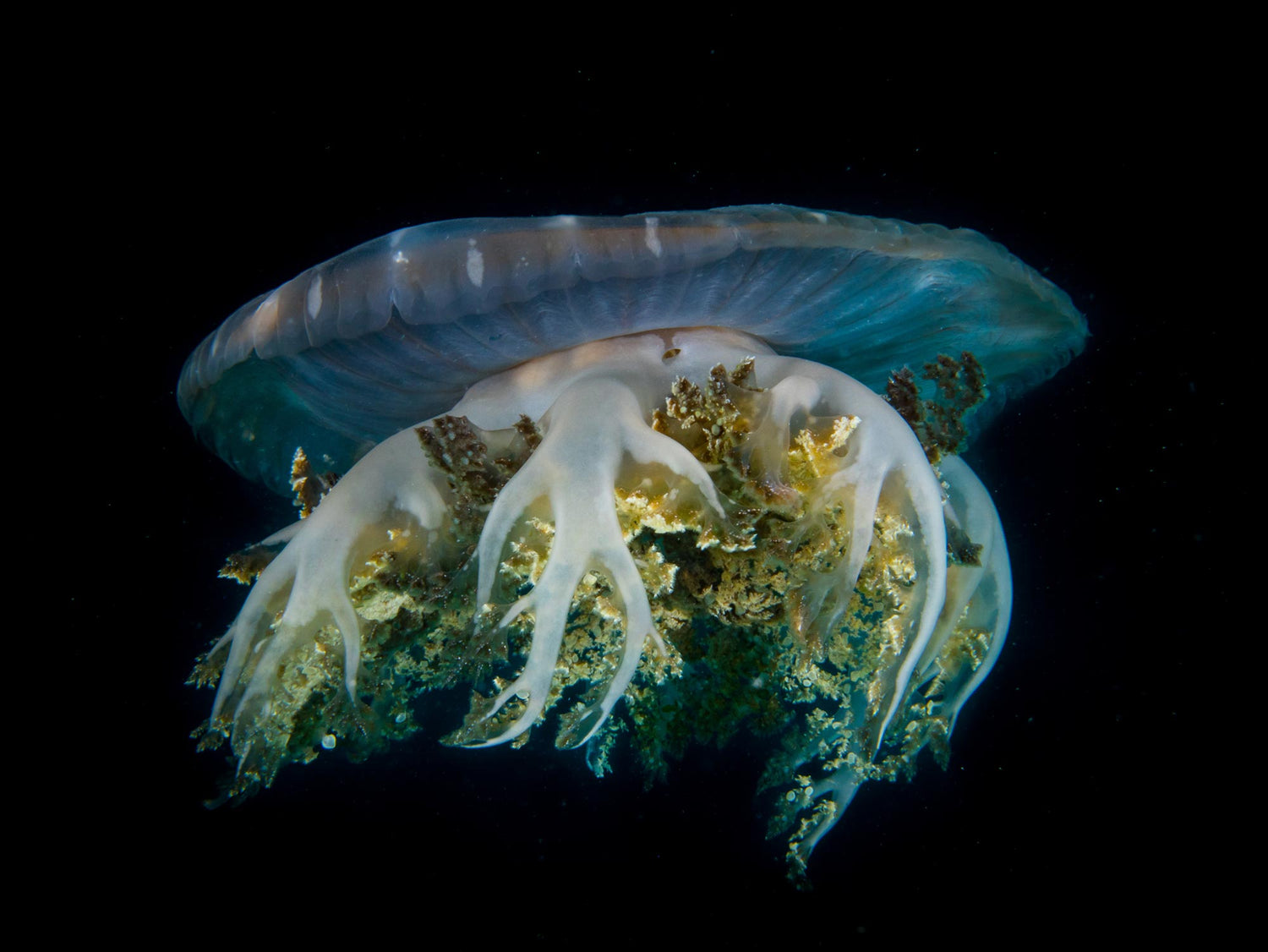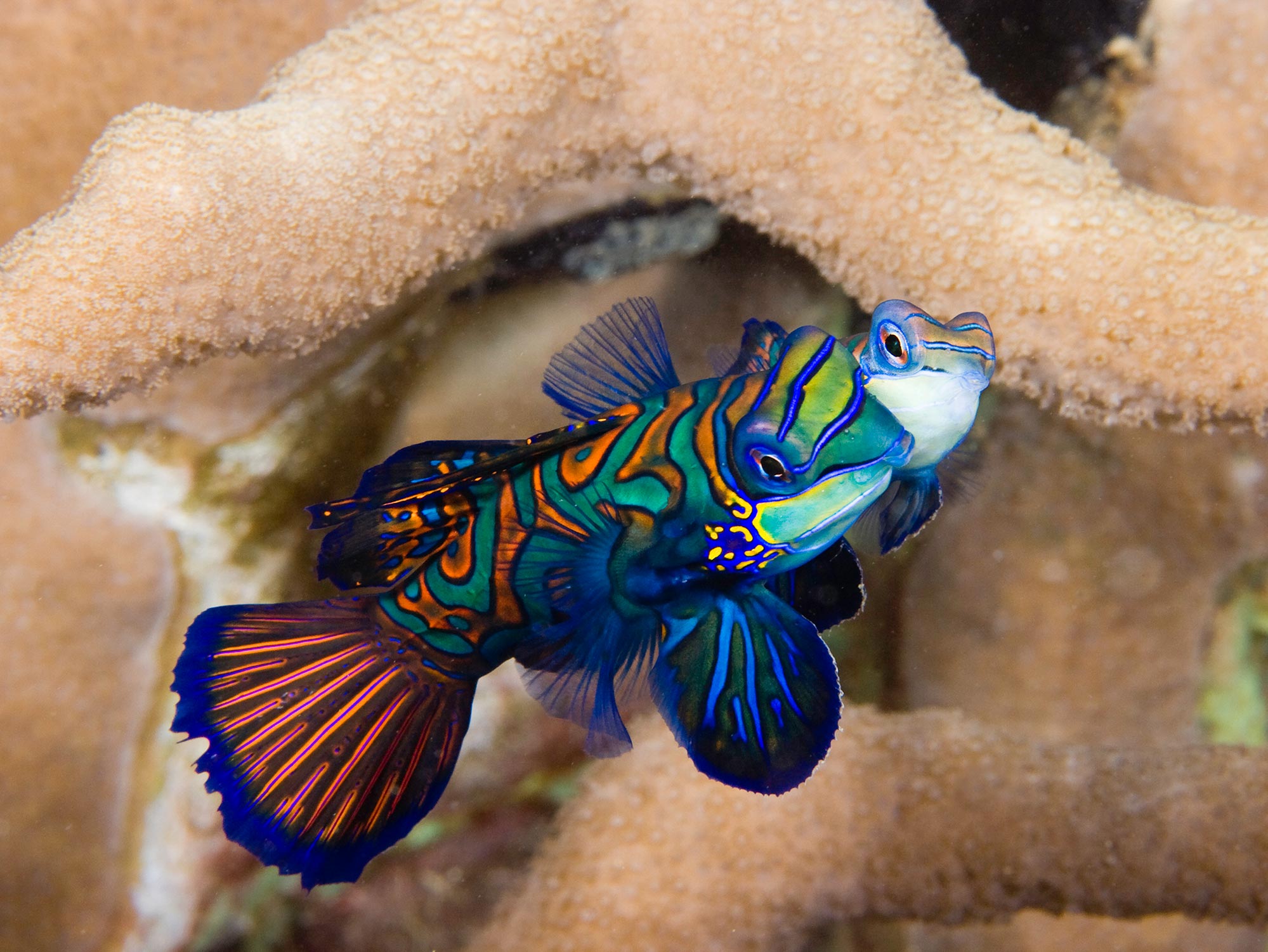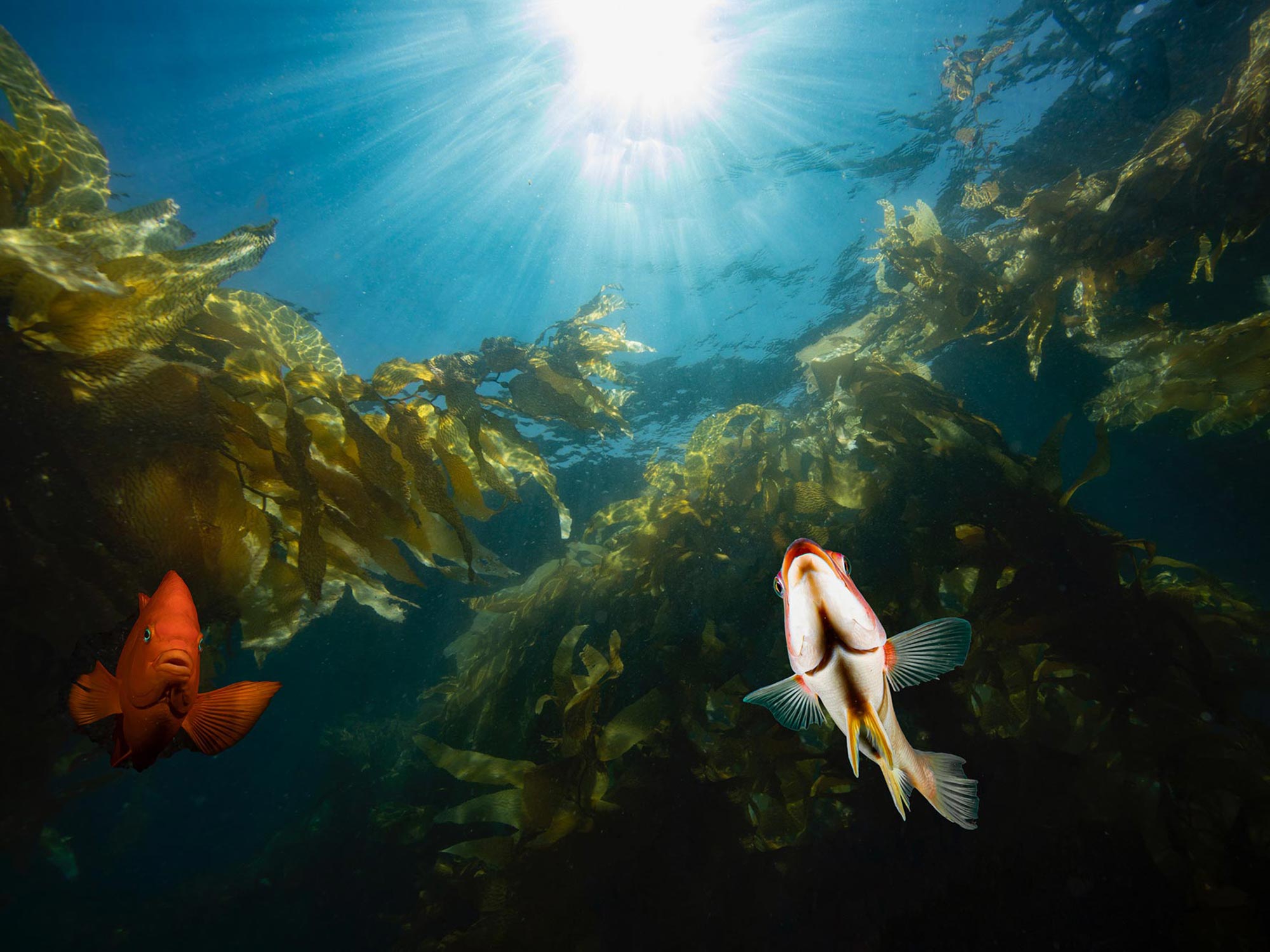Don't be fooled by translucent jellyfish, these creatures offer a plethora of color if you know how to light them correctly. With their billowing tentacles and otherworldly appearance, jellyfish are mesmerizing creatures to photograph and provide a great opportunity to experiment with creative lighting techniques.
Where
Tropical and temperate oceans, all depths, even freshwater. Most often spied during the safety stop in deep water swimming near the surface.
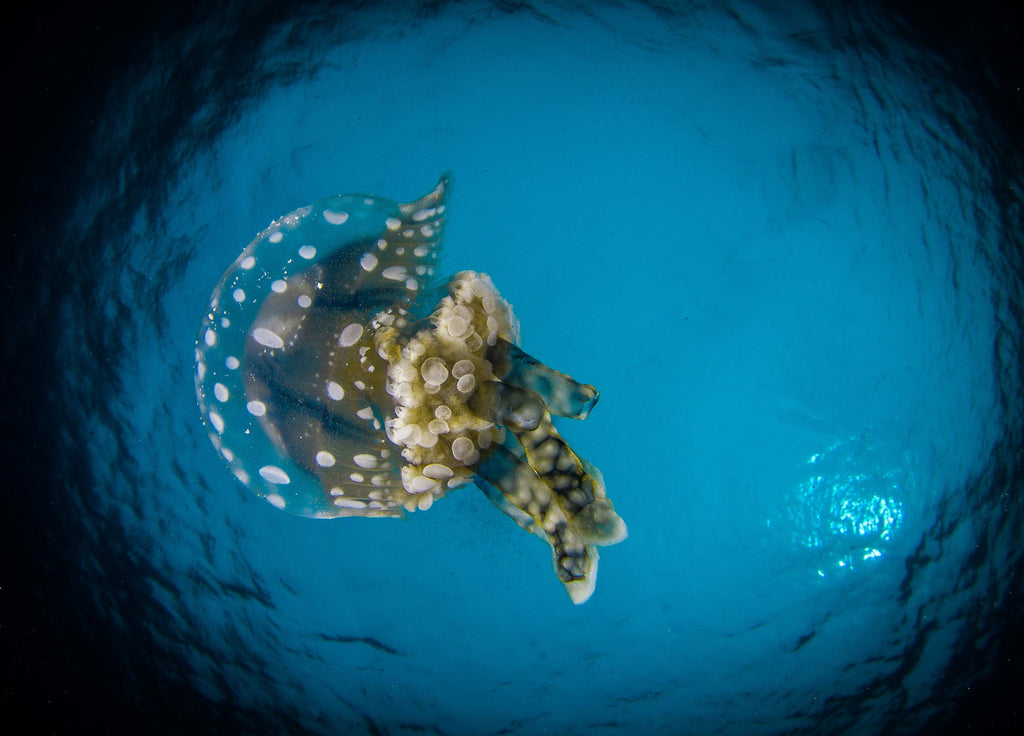
With a fisheye lens you can still fill the frame with a tiny jellyfish as long as you can get him an inch or so from the dome. Snell's Window tells you that this was shot straight up, the small highlight on the right (the sun) tells you the lens is stopped down (F-20). © 2021 Steve Miller
DSLR + Mirrorless
Mode: Manual. There are few things in open water that a diver can out swim, jellyfish are one.
ISO: 200-400. If you find these at the end of a dive while doing a safety stop, the conditions can be very bright.
Aperture: f/8 to f/22 will provide a lot of depth of field which is needed at these close distances. These animals are three-dimensional and translucent, so try stopping down your lens all the way, this will also give you a black background.
Shutter speed: Tentacles tend to flow around with the current, so a shutter speed of 1/125 or faster will stop this motion. A strobe will do a much better job, so use the synch speed of your camera (generally 1/200-1/250 second).
Lens: Enjoy any lens that you wish here (from around 100mm or wider). Jellyfish are beautiful with a macro lens, a super wide fisheye, and everything in-between, as long as it focuses very, very close.
Point and Shoot
ISO: 200-400 for shallow, 600-800 for deeper or darker.
Aperture: f/8 to start, but virtually any aperture will work if the ISO and shutter speed are balanced against this.
Shutter speed: 1/60 to 1/250. Flash synch for your camera, a flash will really help these images since ambient light will be strong
Lens: Super wide, macro, and everything in between, as long as they focus close.
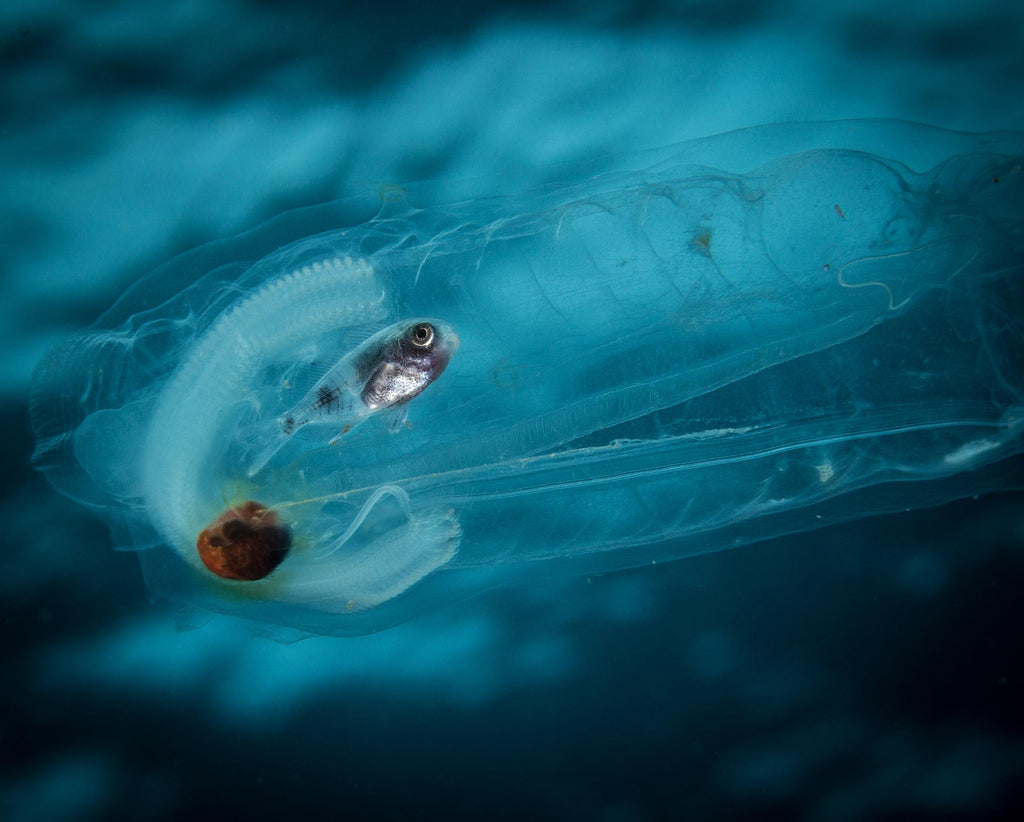
A macro lens like this 60mm is the logical choice for shooting jellyfish (or in this case a salp). The juvenile fish is actually hiding inside the stomach of this salp. © 2021 Steve Miller
Technique
Some photographers will swim by a small jellyfish, note the interesting pulsing movement, and move on because they look totally white. In many cases this is because it is so bright in the shallows. If you use your strobe to overpower the sun, blacking out the background, you will find nice color (with a bit of saturation boost in post-production).
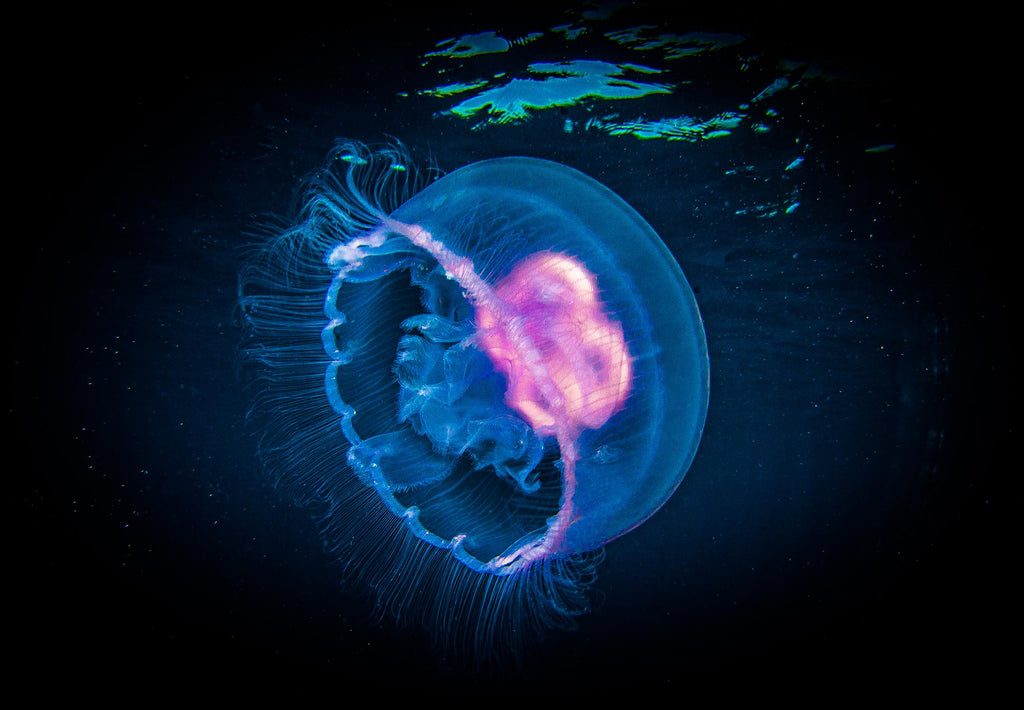
This jellyfish looked entirely white to the naked eye, but with a strong flash and some serious saturation boost in post, you can find interesting colors to work with. © 2021 Steve Miller
Strobes
Most Jellyfish are translucent and some are almost transparent, this means they will "glow" when lit certain ways. Move your strobes around to create harsh shadows for rich blacks, side light, light from above, or backlight. These are great subjects for creative techniques of lighting and exposure. Since you are generally in open water, you don't need to worry about scatter, and can use any strobe or camera angle you wish.

Don't be afraid to try new strobe positions when photographing jellyfish, you might be pleasantly surprised by the colors you come up with. © 2021 Steve Miller
Additional Reading
Macro with Black Background Underwater Camera Settings
Snell's Window: A Wide Angle Photography Effect
A More Affordable Macro Lens | Sigma 70mm Art and the Canon R5











